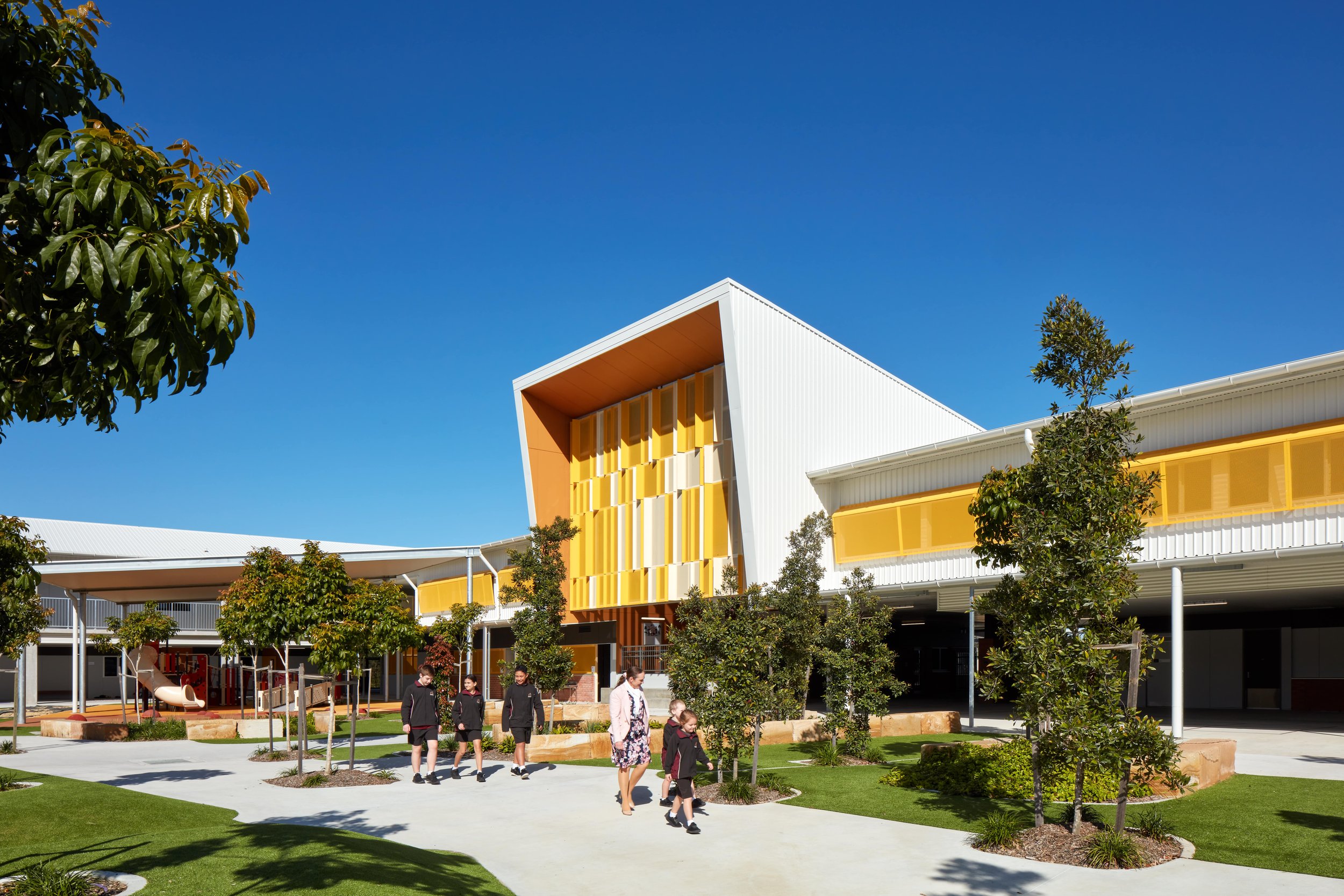Can good design improve student outcomes in your school?
If you’re a school principal or business manager and want to improve your student outcomes, boost your reputation, and future-proof your school then it's probably time to focus on good design. A well-designed campus and classroom buildings are critical to the long-term success of your school – it doesn’t need to cost a fortune and it's not just about aesthetics.
We hear a lot about the challenges that schools face through our work delivering new build State Schools and as a judge on the Learning Environments Awards panel for Australia and Australasia. Luckily, this means that we also get to see first-hand the impact of good design on a school's success.
Here are five reasons why good design is essential for your school in Australia and some ideas and strategies you can look at to make some changes:
1. Attracting and Retaining Students and Staff
With increasing competition among schools for top sporting, academic and teaching talent, it's essential to stand out from the crowd. When your prospective or current students and teachers leave the campus you want to make sure they have fallen in love with and remember some of the key buildings and spaces that they can talk about and look forward to visiting again. Buildings and campuses that are carefully planned to function effectively and efficiently and are enjoyable to work and learn in leave lasting impressions and help you retain and attract
great teachers, students and their families.
Collaboration spaces on the verandahs of Foxwell State Secondary College offer light filled and memorable spaces that students often feature in stories and descriptions of their school.
2. Creating a Safe and Secure Environment
Creating a safe and secure environment for your students is a top priority. Good design can help you achieve this by incorporating safety features such as secure entryways, passive surveillance of classrooms and outdoor areas, surveillance cameras, and emergency response systems. Designing your school with safety in mind can also help reduce incidents of bullying, violence, and other safety concerns.
The Library at Foxwell State School offers great views out across the school, whilst the balcony and adjacent work spaces mean that the space feels safe and welcoming.
3. Improving Student Outcomes
Well-designed learning environments can improve student achievement, attendance, and overall well-being. Design elements such as natural light, views of the landscape, good wayfinding, comfortable seating, and quiet study areas with calming colours palettes can create a positive learning environment that promotes student engagement and enhances their ability to learn.
The landscaped courtyard and terraced edges at Everleigh State School helps to orient students and offers great views and a place to relax, play, socialise and connect.
4. Improving behaviour through a sense of community and belonging
Creating a sense of community and belonging among students, teachers, and staff is crucial to improving student behaviour. By designing spaces that encourage collaboration and social interaction, you can foster a sense of connectedness and create a welcoming environment that promotes positive relationships and student success. Spaces such as collaboration areas on verandas and active, vibrant entries and waiting areas can help support and encourage conversations and build relationships.
The covered and landscaped entry and drop-off area at Gainsborough State School creates a welcoming, shady and cool space for parents, teachers and students to meet and socialise.
5. Future-Proofing Your School
Designing your school with flexibility in mind can help you adapt to changing educational trends, technology advancements, and student needs. For example, designing multi-functional spaces with extra cable conduits for future technology that can be easily adapted to different uses can help you stay ahead of the curve and avoid costly renovations down the line.
The impressively flexible and adaptable performing arts centre at Foxwell State Secondary College includes moveable walls that allow for 6 different teaching and performance modes, including theatre in the round, traditional theatre, and smaller practice rooms.
Don't miss out on the benefits of good design and feel free to reach out to us if you’re thinking about addressing some of the challenges or opportunities at your school. Incorporating design elements that promote safety, student engagement, community, and flexibility can create a positive learning environment that attracts and retains students and promotes their success.
Here are some examples of schools that have successfully incorporated good design into their facilities:
St. Hilda's School on the Gold Coast has a state-of-the-art science and technology center designed to inspire and engage students in STEM subjects.
Haileybury College's Newlands campus in Melbourne has an innovative learning hub designed to encourage collaboration, creativity, and critical thinking.
[1] Barrett, P., Davies, F., Zhang, Y., & Barrett, L. (2015). The impact of classroom design on pupils' learning: Final results of a holistic, multi-level analysis https://www.sciencedirect.com/science/article/pii/S0360132315000700






